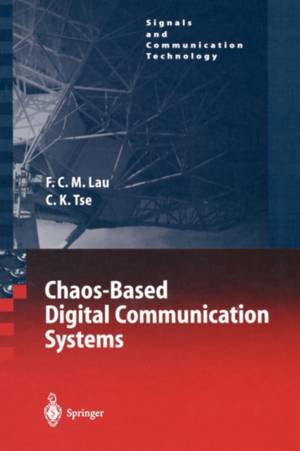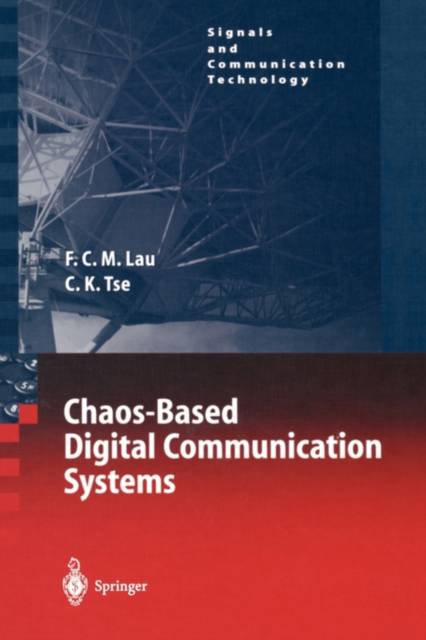
- Afhalen na 1 uur in een winkel met voorraad
- Gratis thuislevering in België vanaf € 30
- Ruim aanbod met 7 miljoen producten
- Afhalen na 1 uur in een winkel met voorraad
- Gratis thuislevering in België vanaf € 30
- Ruim aanbod met 7 miljoen producten
Zoeken
Chaos-Based Digital Communication Systems
Operating Principles, Analysis Methods, and Performance Evaluation
Francis C M Lau, Chi K Tse
€ 158,45
+ 316 punten
Uitvoering
Omschrijving
In the 1970's and 1980's, we saw phenomenal advancement in nonlinear sci- ence, which had led to many important discoveries that greatly improve our understanding of the physical world. Among them, the discovery of chaos in deterministic systems is unarguably one of the most revolutionary scientific findings. We are now able to explain the apparent complexity and subtle or- der exhibited by many physical systems under the unified framework of chaos theory. The past decade has seen heightened interest in the exploitation of chaos for useful applications in engineering systems. One application area that has attracted a great deal of attention is communications. Chaotic signals, by virtue of their wide band characteristic, are natural candidates for carrying information in a spread-spectrum communication environment. The use of chaotic signals in communications thus naturally inherits the advantages that are currently being offered by conventional spread-spectrum communication systems, such as robustness in multi path environments, resistance to jam- ming, low probability of interception, etc. In addition, chaotic signals are easy to generate and hence offer a potentially low-cost solution to spread- spectrum communications. Although many practical problems need to be solved before chaos-based communications can be realized in practice, the field has advanced rapidly during the past few years and it now reaches a point where abstract concepts from physics and mathematics have been fruitfully ported to techniques that allow information to be carried by chaotic signals.
Specificaties
Betrokkenen
- Auteur(s):
- Uitgeverij:
Inhoud
- Aantal bladzijden:
- 228
- Taal:
- Engels
- Reeks:
Eigenschappen
- Productcode (EAN):
- 9783642056161
- Verschijningsdatum:
- 15/05/2011
- Uitvoering:
- Paperback
- Formaat:
- Trade paperback (VS)
- Afmetingen:
- 156 mm x 234 mm
- Gewicht:
- 344 g

Alleen bij Standaard Boekhandel
+ 316 punten op je klantenkaart van Standaard Boekhandel
Beoordelingen
We publiceren alleen reviews die voldoen aan de voorwaarden voor reviews. Bekijk onze voorwaarden voor reviews.











